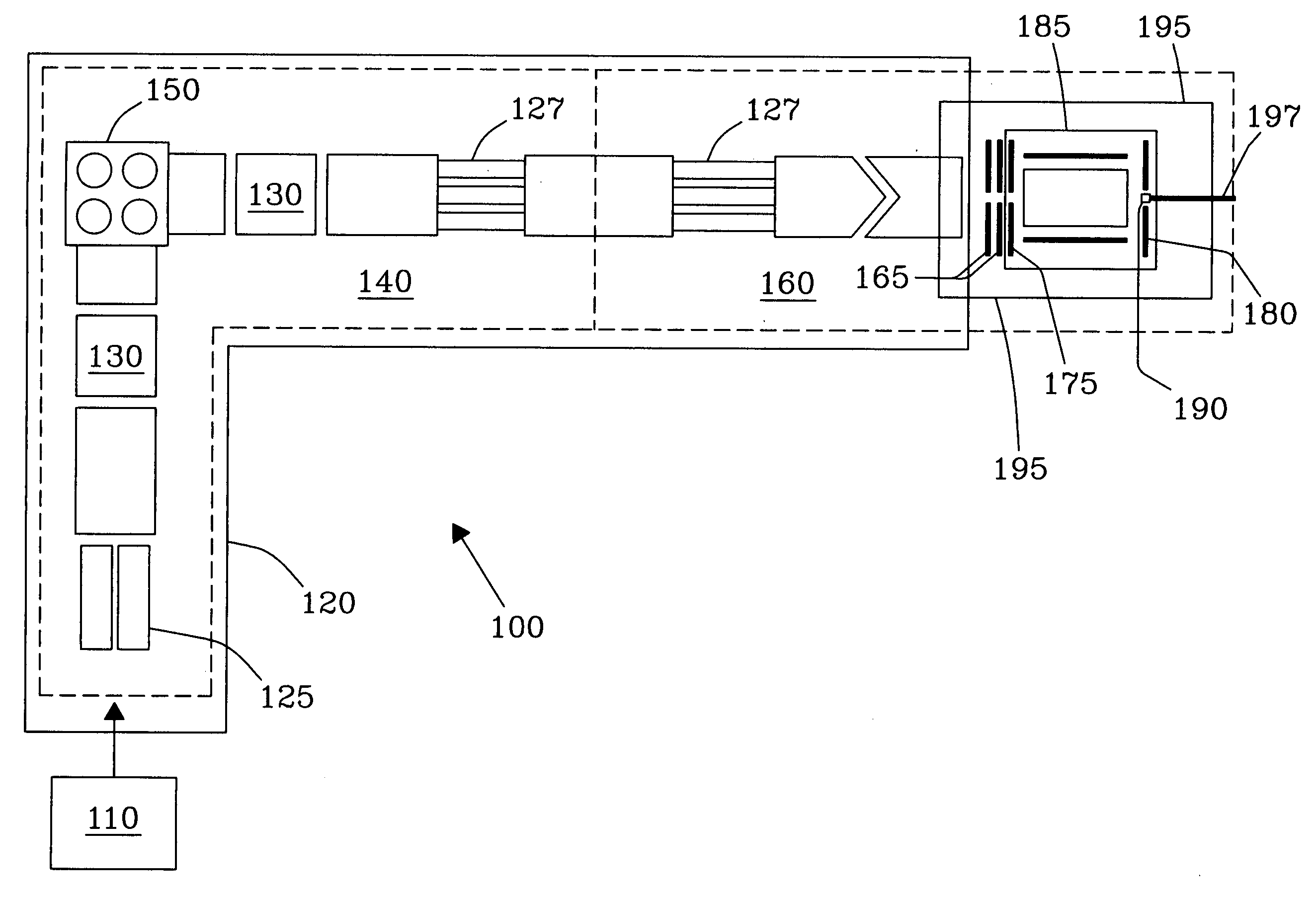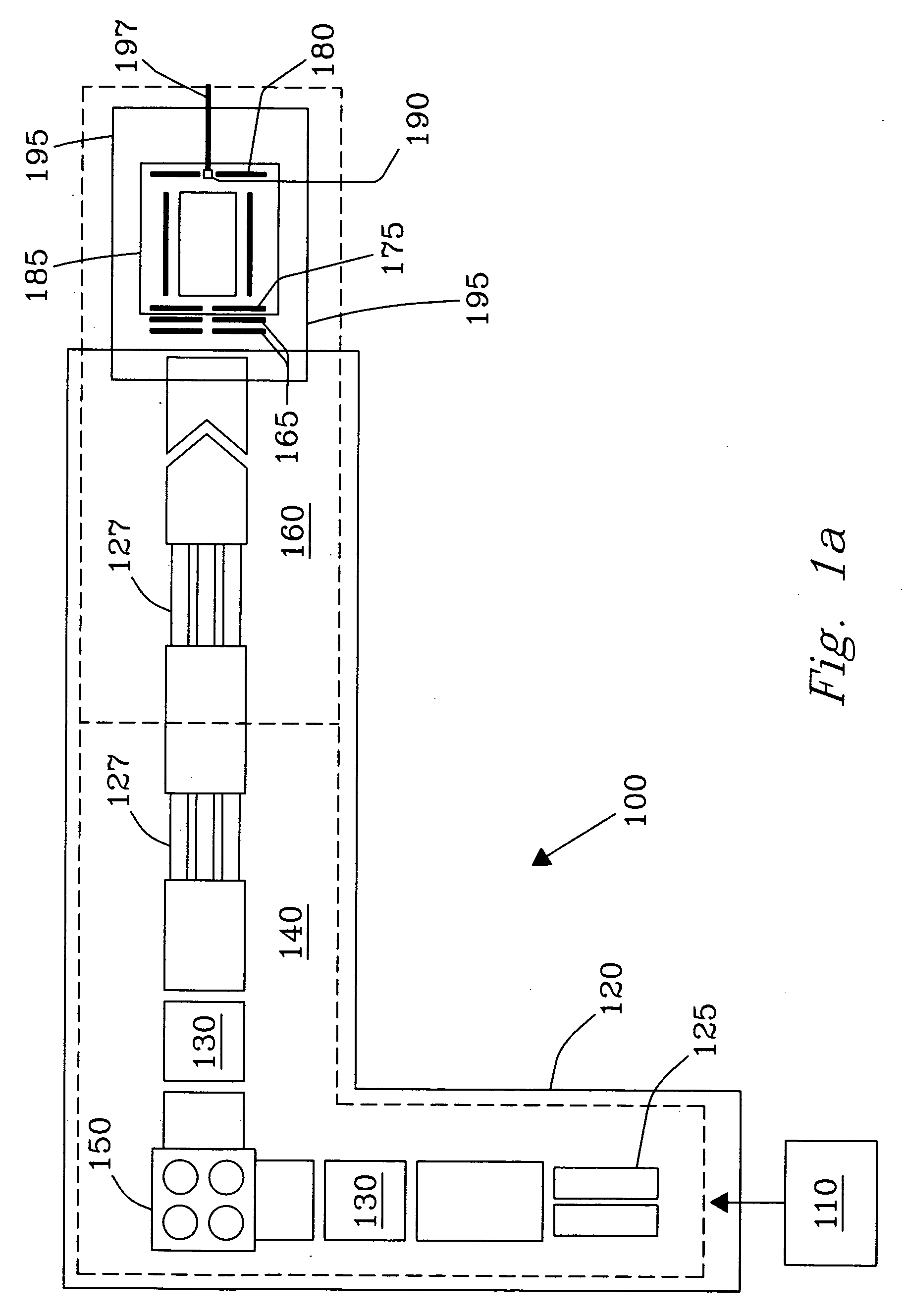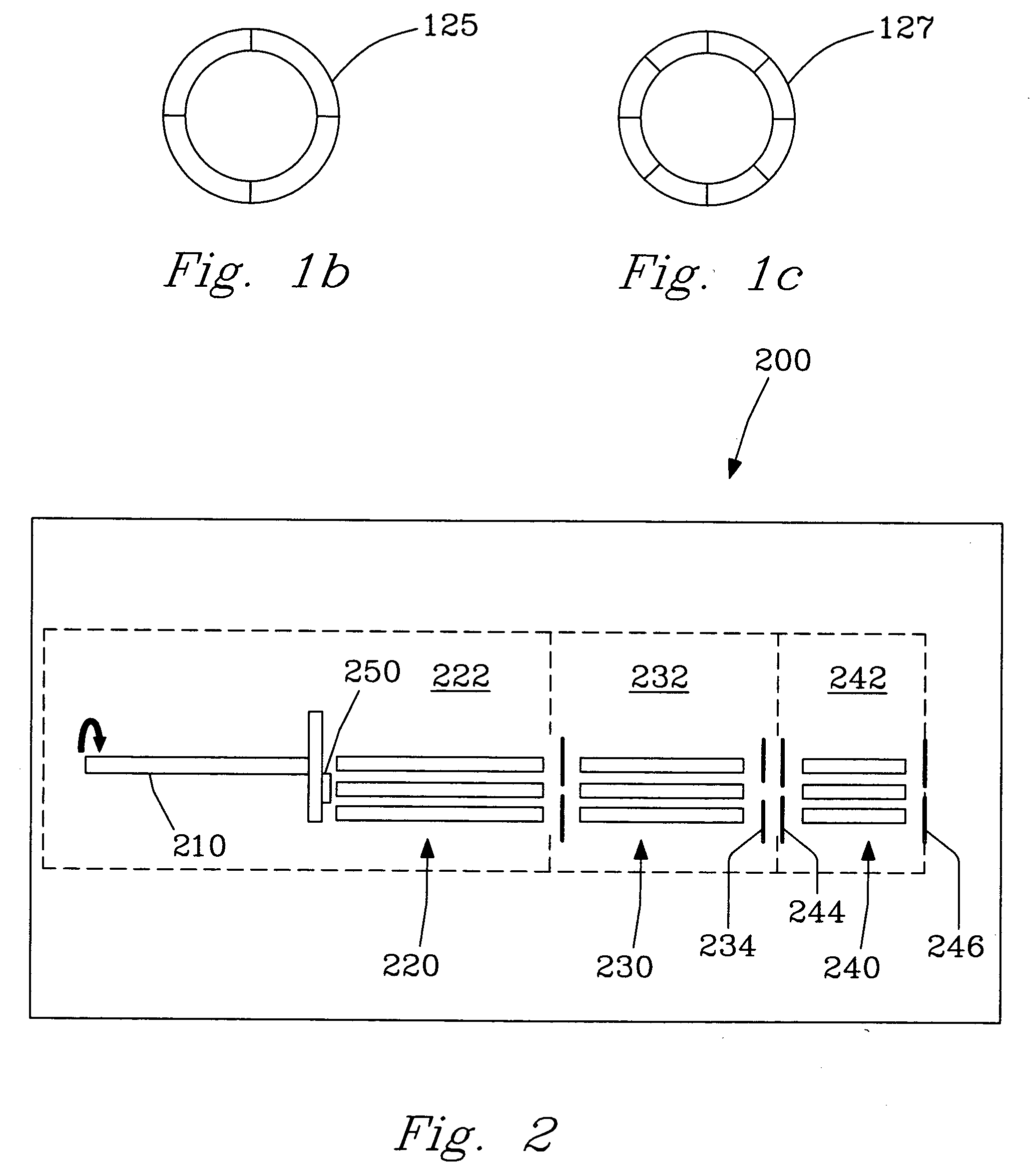Method and apparatus for enhanced sequencing of complex molecules using surface-induced dissociation in conjunction with mass spectrometric analysis
a technology of surface dissociation and mass spectrometry, applied in the field can solve the problems of limited and often inability to identify large and complex molecules, insufficient structure-specific data necessary, and limitations in the fragmentation of large and complex molecules in ms experiments, so as to reduce the quantity of energy absorbed by the surface, reduce the initial kinetic energy of a selected precursor ion, and reduce the effect of stiff or rigid surfa
- Summary
- Abstract
- Description
- Claims
- Application Information
AI Technical Summary
Benefits of technology
Problems solved by technology
Method used
Image
Examples
Embodiment Construction
class="d_n">[0033] Surface Induced Dissociation (SID) on rigid diamond targets or surfaces presents an entirely new concept for sequencing complex molecules, including, but not limited to, peptides and proteins leading to unambiguous identification thereof. An FT-ICR MS and MALDI ionization system combined with the SID target of the present invention offers very high mass resolution and mass accuracy, as well as multiple stages of tandem mass spectrometry essential for many applications and analyses. Experimental results have demonstrated that SID on rigid diamond surfaces results in significantly improved sequence coverage for large and complex molecules such as peptides and proteins.
[0034]FIG. 1a illustrates a specially designed Fourier Transform Ion Cyclotron Resonance (FT-ICR) Mass Spectrometer 100 constructed in-house for SID studies, as described in detail in Laskin et al. [Anal. Chem. 2002, 74, p. 3255], which disclosure is incorporated herein by reference in its entirety. Th...
PUM
 Login to View More
Login to View More Abstract
Description
Claims
Application Information
 Login to View More
Login to View More - R&D
- Intellectual Property
- Life Sciences
- Materials
- Tech Scout
- Unparalleled Data Quality
- Higher Quality Content
- 60% Fewer Hallucinations
Browse by: Latest US Patents, China's latest patents, Technical Efficacy Thesaurus, Application Domain, Technology Topic, Popular Technical Reports.
© 2025 PatSnap. All rights reserved.Legal|Privacy policy|Modern Slavery Act Transparency Statement|Sitemap|About US| Contact US: help@patsnap.com



